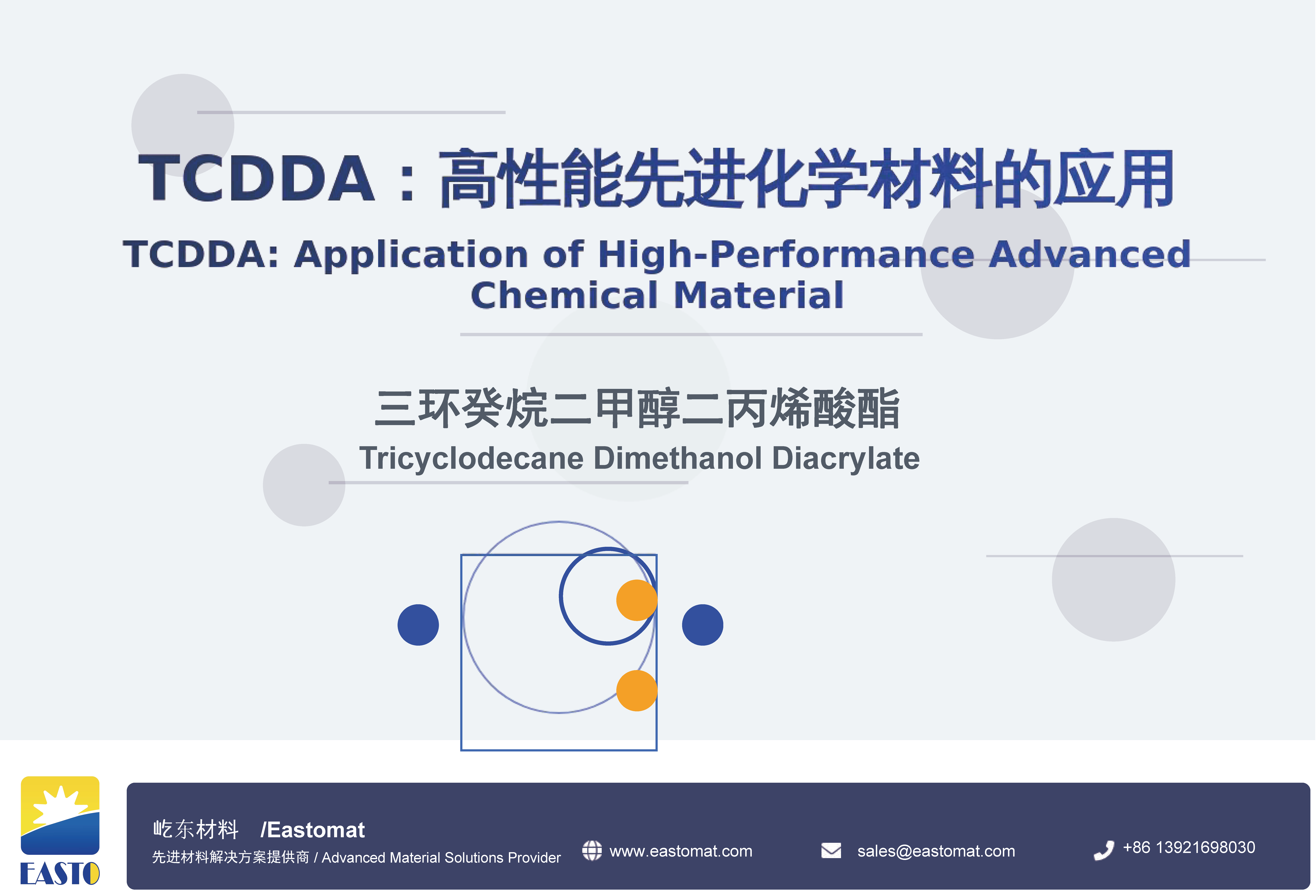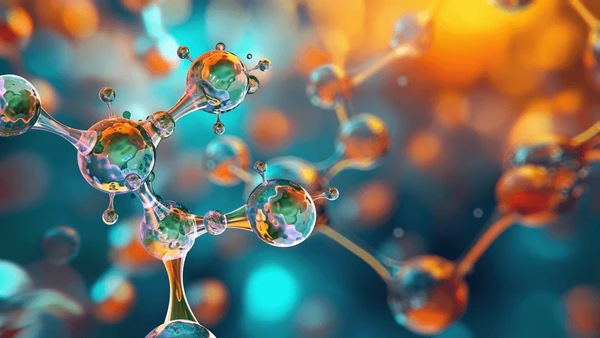The Impact of (Meth)acrylate Functionality on the Performance of UV/EB Cured Materials (Part 2)
Release time:
2025-06-09
Practical Conclusions and Application Guidelines: Comparative Table of (Meth)acrylate Functionality's Impact on Key Properties and Material Selection Strategies
Based on the above analysis, we can summarize the general trends of (meth)acrylate functionality's impact on various key properties and provide guidance for material selection and formulation design in practical applications. The table below summarizes these impacts, with data primarily based on general industry knowledge and polymer theoretical inferences. Specific values may vary significantly due to the specific chemical structure of the (meth)acrylate backbone, molecular weight, test conditions, and other components in the formulation.
Comparative Table of (Meth)acrylate Functionality's Impact on Key Properties
Key Performance Indicator | Low Functionality (e.g., IBOA, HEMA, Monofunctional Aliphatic PUA) | Medium Functionality (e.g., HDDA, TPGDA, Difunctional Epoxy Acrylate) | High Functionality (e.g., TMPTA, PETA, High-Functionality PUA/PEA) | Trend Summary (as Functionality ↑) | Reference Test Standard (Example) |
Curing Speed | Slow to medium | Medium to fast | Fast to extremely fast | ↑ (Increased reactive sites) | RT-FTIR, Photo-DSC |
Hardness | Low (soft) (Pencil hardness < B) | Medium (Pencil hardness H-3H) | High (hard, usually brittle) (Pencil hardness > 3H) | ↑ (Increased cross-linking density) | ASTM D3363, D2240 |
Flexibility/Elongation | High (Elongation > 50%) | Medium (Elongation 5-50%) | Low (Elongation < 5%) | ↓ (Increased network rigidity) | ASTM D522, D882 |
Chemical Resistance | General | Good | Excellent | ↑ (Improved network compactness) | ASTM D543, MEK Rub, D5402 |
Adhesion to Substrate | Possibly good (good wetting), but cohesive strength might be low | Depends on formulation, substrate, and presence of adhesion-promoting groups | Requires careful handling (high shrinkage can impair adhesion), unless molecular structure is specially designed | Complex, non-linear | ASTM D3359, D4541 |
Curing Shrinkage | Lower (<5-7%) | Medium (5-10%) | Higher (>8-12%, can reach 15%+) | ↑ (Increased reactive double bond density) | Densitometer method (ASTM D792 comparison) |
Tg | Usually lower (possibly < room temperature) | Medium (room temperature - 80℃) | Usually higher (>80℃, can reach 150℃+) | ↑ (Restricted chain segment movement) | DSC (ASTM E1356), DMA (E1640) |
Viscosity (similar molecular weight in the same series) | Usually lower (monomers often <50 mPa·s) | Medium (monomers tens to hundreds of mPa·s) | Usually higher (oligomers can reach tens of thousands to millions of mPa·s) | ↑ (Especially for oligomers) | Brookfield (ASTM D2196) |
Note: The performance descriptions and numerical ranges in the table are general trends. Actual material properties can vary significantly due to the complex interplay of various factors, including the specific chemical structure of the (meth)acrylate (e.g., aliphatic, aromatic, ether bonds, ester bonds, urethane bonds, etc.), molecular weight, presence of other functional groups, other components in the formulation (e.g., photoinitiators, pigments, fillers, additives), and curing process conditions (light intensity, temperature, atmosphere). Precise data requires experimental measurement.
Material Selection and Application Considerations Based on Performance Impact
If the Goal is: Excellent Hardness, Abrasion Resistance, and Fast Curing
- Recommended Focus: Prioritize high-functionality (meth)acrylate monomers (e.g., TMPTA, PETA) and oligomers (e.g., high-functionality polyurethane acrylates, polyester acrylates, epoxy acrylates).
- Reasoning: High functionality leads to high cross-linking density, resulting in high surface hardness, excellent scratch and abrasion resistance. Additionally, a high number of reactive sites facilitates fast curing, improving production efficiency.
- Typical Application Scenarios: Wear-resistant floor coatings, hard protective coatings (e.g., mobile phone screen protectors), high-strength and high-precision parts in UV-curable 3D printing, UV topcoats for electronic product casings, and high-grade wood finishes.
- Precautions: Pay close attention to potential issues caused by high curing shrinkage, such as internal stress, reduced adhesion, and material brittleness. These can be mitigated by adding small amounts of low-functionality monomers or flexible oligomers to improve toughness, selecting high-functionality oligomers designed for low shrinkage, or optimizing the curing process (e.g., using step-by-step curing, controlling light intensity gradients) to achieve a balance.
If the Goal is: Excellent Flexibility, Low Shrinkage, and Good Adhesion
- Recommended Focus: Prioritize low-functionality (meth)acrylate monomers (e.g., IBOA, LA, 2-EHA) and mono- or difunctional oligomers containing flexible chain segments (e.g., long-chain aliphatic polyurethane acrylates, polyether acrylates).
- Reasoning: Low functionality leads to lower cross-linking density and greater molecular chain mobility, imparting good flexibility and high elongation at break to the material. Additionally, relatively low curing shrinkage helps reduce internal stress and improves adhesion to various substrates (especially flexible substrates like plastics and films). Some low-functionality monomers have lower viscosity, which also facilitates wetting porous or uneven substrates.
- Typical Application Scenarios: Encapsulation adhesives for flexible electronic devices, printing inks for flexible packaging, coatings for leather and textiles, pressure-sensitive adhesives, elastomer material preparation, and coatings for plastic parts requiring frequent bending or deformation.
- Precautions: Low-functionality systems may have drawbacks such as slower curing speeds, lower hardness, lower Tg, and relatively weaker chemical and heat resistance. These can be optimized by increasing initiator concentration, selecting highly active initiating systems, blending with moderate- to high-functionality components, or selecting a backbone chemical structure with inherently better weatherability or chemical resistance (e.g., polyurethane backbone).
Comprehensive and Balancing Strategies: Pathway to Customized Performance In most practical applications, materials often need to possess multiple properties simultaneously, requiring a clever balance and combination of (meth)acrylates with different functionalities.
functionality,acrylate,methacrylate
Latest News
Get a Free Consultancy
NANTONG EASTO MATERIALS TECHNOLOGY CO.,LTD.

No.118,Zhujiang Rd.,Juegang St.,Rudong County,
Nantong City,Jiangsu Province,226400,China




 2025-06-11
2025-06-11






